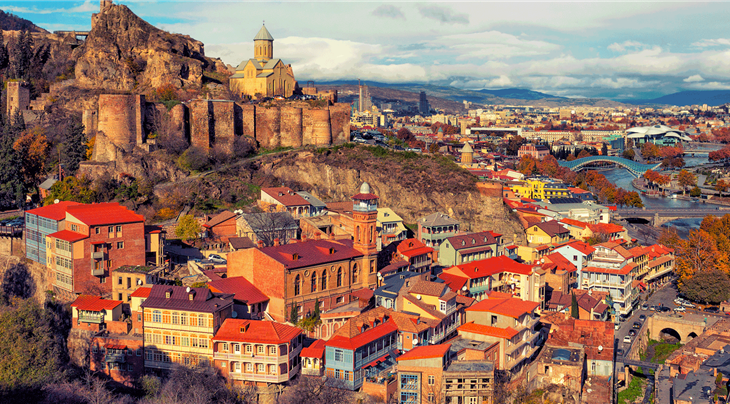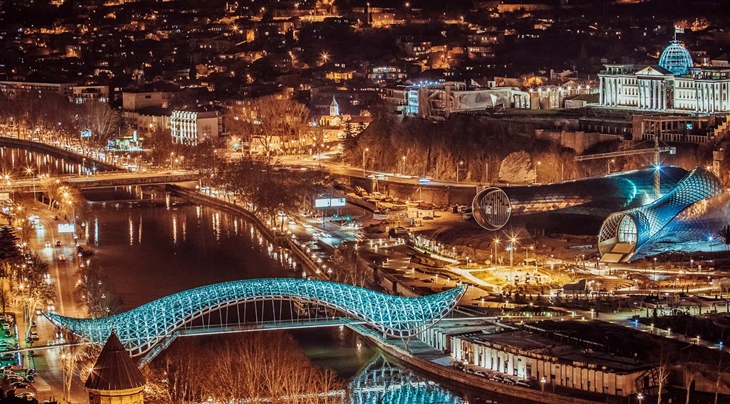Tbilisi

Tbilisi - (literally “Warm Spring”) is the capital and largest city of Georgia, lying on the banks of the Mt’k’vari River. The name is derived from an early Georgian form of T’pilisi and was officially known as Tiflis until 1936. The city covers an area of 726 km² (280.3 square miles) and has 1,480,000 inhabitants. According to an old legend, the present-day territory of Tbilisi was covered by forests. One day King Vakhtang I Gorgasali of Georgia went hunting with a falcon (sometimes the falcon is replaced with either a hawk or other small birds of prey in the legend). The King’s falcon allegedly caught or injured a pheasant during the hunt, after which both birds fell into a nearby hot spring and died from burns. King Vakhtang became so impressed with the hot springs that he decided to cut down the forest and build a city on the location. The name Tbilisi derives from the Old Georgian word “Tpili”, meaning warm. The name ‘Tbilisi’ (‘warm location’) was therefore given to the city because of the area’s numerous sulfuric hot springs.

Nowadays Tbilisi is a significant industrial, social, and cultural centre. The city is also emerging as an important transit route for global energy and trade projects. Located strategically at the crossroads between Europe and Asia and lying along the historic Silk Road, Tbilisi has often been a point of contention between various rival powers and empires. The history of the city can be seen by its architecture, where the Hauss mannized Rustaveli Avenue and downtown are blended with the narrower streets of the medieval Narikala district.
The main tourism attractions of Tbilisi and Georgia are: amazing landscapes, sulfur baths, wine tours, alpinism- mountaineering, mountain biking, skiing, horse riding, rafting and caving.